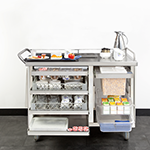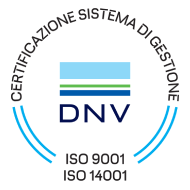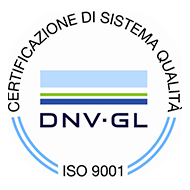So much attention (and criticism) today is levelled at what is going out of kitchens on food trays to patients. What should be of a greater concern to food managers is what’s coming back.
Food waste is fast becoming a priority issue for operations that recognize just how much those untouched or unfinished items represent to the bottom line. The default position is to blame food palatability – a major concern unto itself, as that brings up issues of ingredients, freshness, preparation methods, presentation and so on. In some cases, that’s precisely the issue and food managers are encouraged to constantly keep tweaking the menu when certain items are clearly rejected.
Based on my recent discussions with a few of our clients, food waste is a more nuanced issue. Or complicated – depends how you want to approach it. What emerged were a number of interesting points and strategies for trying to limit the amount of waste. Or better yet, use waste as a means of initiating changes that could improve service and better direct funds.
Proper Portioning
Many clients are starting to question how appropriate portion sizes are. One food manager found an effective way to communicate the issue by taking senior management on food rounds to see the level of waste. It proved a persuasive tactic and helped to prompt reassessment of serving sizes.
“If a quarter of your mac ‘n cheese is going in the garbage, then I think it’s worth limiting portion size,” she states. That means either getting them on the floor or in the kitchen where they can see the waste. It’s easy to do the math on the sheer cost of waste once observed firsthand.
Nutritional Counts
Also raised was the question of recommended daily intakes for patients. As one colleague says, “There’s no criteria set for people who are unwell,” and suggests the baseline for diets are determined by what healthy people eat. How do we better determine and respond to the needs of a great diversity of clients, especially those whose appetites are limited and when aged populations tend to make up a larger percentage of the patients.
Observe, Adapt, Refine
Adapting menus to meet the specific needs of clients is never easy, but it is worth sampling and tracking different items. For one of our clients, that means providing a more kid-friendly menu for younger ones, such as grilled cheese, fish bites and the ever- legendary Kraft Dinner. Similarly, offering vegan or vegetarian options like black bean burgers and chickpea-spinach patties is respecting the variety of dietary needs. We’re hearing more about gluten-free items such as turkey meatballs, for instance, and switching entirely to vegan Becel for everyone, which actually simplifies matters rather than complicates.
In some cases, food practices follow standard rituals with little acknowledgement that some of the items included on the tray come back untouched. One of our clients points out that serving hot tea with lunch and supper goes to waste far more than it is consumed. She also points out that for each hot tea there is the time taken to portion water and include milk, sugar and a teabag. A simple example of how one item can waste staff resources, ingredients and time. What items are you commonly seeing coming back to the kitchen? Is it time to do a more rigorous assessment?
Staff Reporting
Of course, more can be done on the floor in terms of staff reporting of the food items that are welcome and those that are not. Staff are made to track any shortages or overages for that matter to see where refinements in preparation and portioning can be made. This same client also has arranged a program with a community partner that provides any acceptable leftovers to a community kitchen to feed those in need. That’s a wise use of resources to minimize waste.
It’s important to recognize that we’re just scratching the surface of food waste here. It’s a complex issue and differences of opinion between food managers, dietitians, nutritionists, floor staff and management are common. Finding solutions to minimizing food waste and improving consumptions rates should be the objective for any operation, rather than defending why operations are encountering so much waste.
Do you have some thoughts around how to reduce food waste or improve menus? We welcome your opinions. Nothing will go to waste, we promise.

















